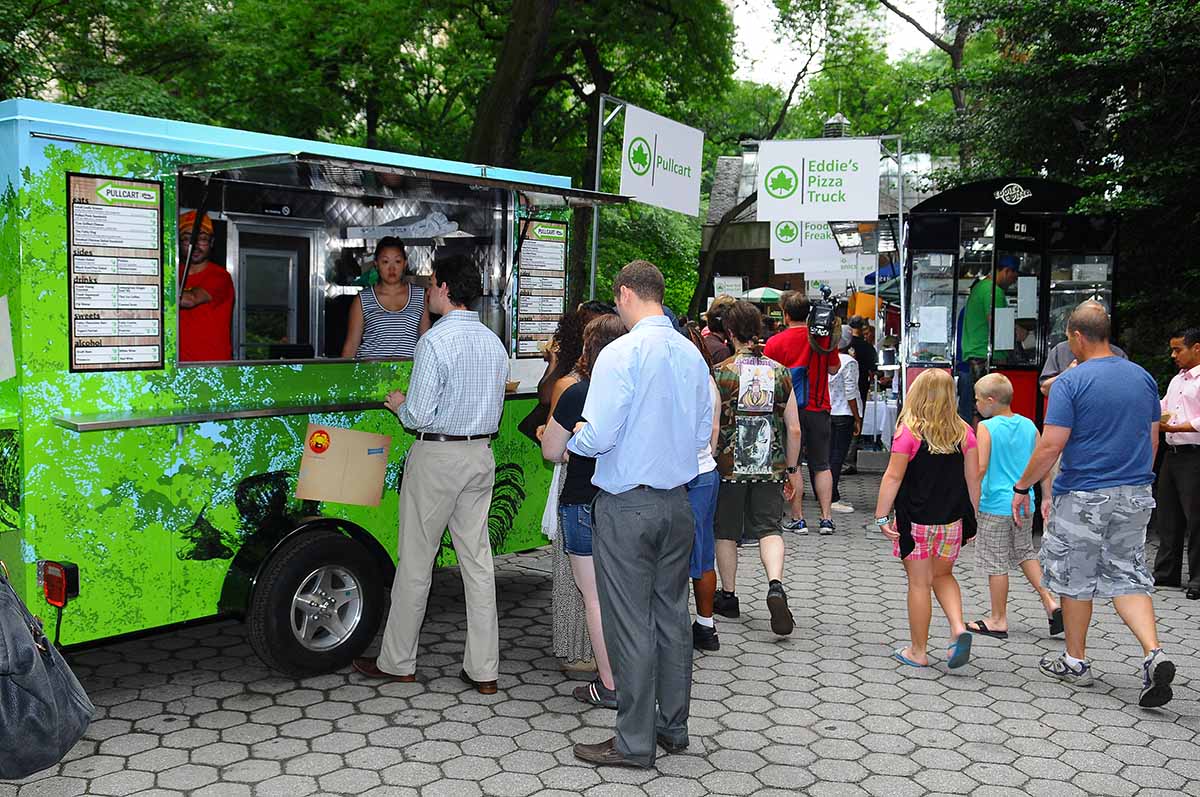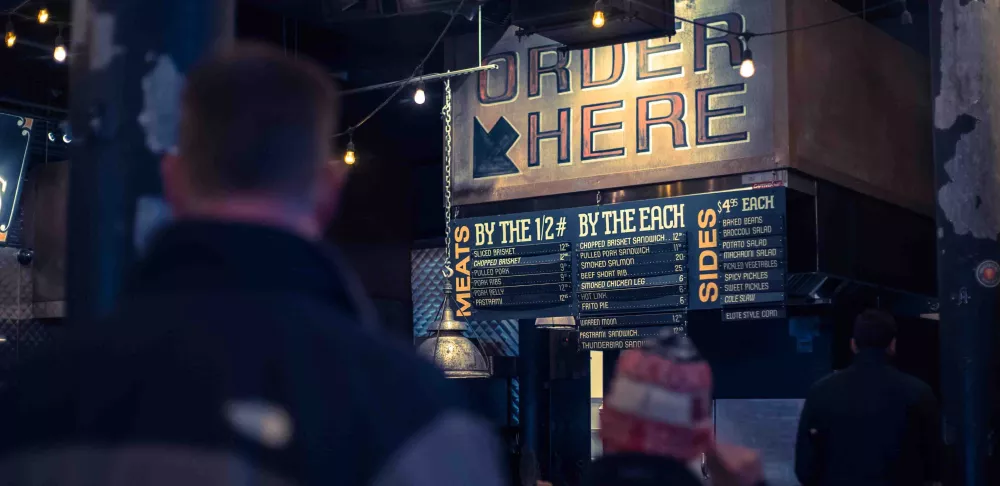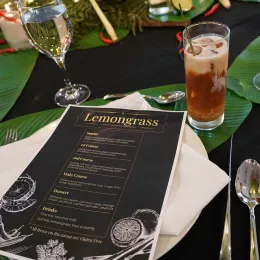As the CEO of Fatty Crew for more than a decade, Rick Camac operated kiosks in Central Park and the Financial District, and concessions in Barclays Center. His Pullcart, Fatty 'Cue and Fatty Snack concepts were well reviewed but short lived. Now ICE's Dean of Restaurant & Hospitality Management, Rick shares what he learned and what to consider and anticipate when pursuing mobile eatery success.
Considering opening a kiosk, concession or food truck could be a great idea, depending on what your ultimate goals are, but it’s important that you understand the pros and cons of such an endeavor.
Creating the concept
First decide what it is you are looking to do – ice cream, sandwiches, pasta and salad, coffee and/or baked goods? All of these could be good ideas as long as you find something that you have an interest in or passion for, that hopefully is easy to execute (not too perishable), and that there’s a way to differentiate yourself. Having some experience in executing your menu will help. Build a sensible business plan and be realistic about what kind of sales such a project can drive. The key is something simple but interesting and easy to execute. One strategy is developing an extension of a brand with a subset of a menu. Fatty Crab's barbecue spinoff, Fatty Cue, did well in Barclays Center.
Timing the process
What planning is needed in advance? Quite a bit actually, so time is a factor. You should plan as much in advance as possible. If it’s with a municipality, there’s likely an RFP (request for proposals) or RFI (request for information). If so, read the fine print – all of it. RFPs are easily found online and usually describe the exact process in great detail. There’s always legal work involved. Hire a good business lawyer (for all of it) that specializes in restaurants and/or hospitality. Create your company, operating agreement and any other documents needed to get started. I signed an agreement with a city agency some time ago only to find out subsequently that my brand name (and logo) would not be approved and they would not allow music (in the middle of a park). Both issues were critical in our business planning and had to be resolved in advance.
Choosing a location
Where to open? That’s the “million-dollar question”! If you want a kiosk in a park, think about seasonality. Be aware of all the park’s rules and regulations. If you're planning a truck that moves around, you may have concerns about tickets, placement, breakdown, where to store/park in the evening, etc. At a concession in an arena or stadium, you must concern yourself with who’s cooking and/or creating your menu. It could be a union shop. Quality control, if not under your direction, could fall through the cracks, with people selling your product that don’t care quite as much about it as you do. As with more traditional brick-and-mortar eateries, it’s all about location, location, location – whatever the concept.

Once you decide where, know there’s likely more paperwork, not to mention possibly community board approval (you may even want or need block association approval), various permits and, if serving liquor, SLA (state liquor authority) approval. At one time, I had a food truck called Pullcart in Central Park (actually a trailer, in which I needed a truck and platform to bring the trailer there and back each day – you could not leave the trailer there overnight) that required the approval of the seven or so community boards that surround the park – some that were quite far away. It can take a month or two to get on a board's calendar and you may have to give something up for approval, such as music, closing hours or alcohol sales. You may have to share your menu or cleaning procedures as well.
Developing the menu
Plan carefully how to execute your menu. Determine where to buy product, how often, how much you can store and what equipment you need. Once you have a feeling for what you want to do, you have to test the product, including how it will be executed, access to the components, how it travels (if that’s the case) and needs to be packaged. Can this be sold at the right price point that will give you an adequate gross margin? You need to predict what product you will need and how much, without ordering too much to reduce waste. See what components you can re-purpose, if at all, and factor in weather (in most cases).
Reaching an audience
Hiring a public relations firm may be quite costly; I’d stick to social media for promotion. This is the easiest way to be “of the moment”. Secure account pages with your business name and update the hours, website and other necessary information. Then add quality photos and find users to engage. Share your specials, hours and any promotions. Pullcart hosted a successful Champagne happy hour in Bethesda Terrace that was promoted on Facebook in advance. (Learn more about effective social media for culinary businesses at ICE.)
Evaluate expansion
What gets really tricky is if you plan to have multiple units, after opening one and having a tested and more predictable model. We opened a Fatty Snack kiosk in World Financial Center and two in Battery Park at the same time. In this case, you have to think about where to cook and/or prepare the food. You may need a commissary, a chef to execute, a manager or managers for oversight, and a truck to bring your product to numerous locations (among other challenges). At one time, I had four kiosks around Manhattan and a fifth site to deliver to. That required a refrigerated truck, a commissary to create the food, a chef or two, a driver and a manager (among other things). You have to concern yourself with gas (and where to find it), tickets (if you don’t have a second person in the truck when the first is delivering), and what’s happening when the manager is not at a particular kiosk (he/she can only be at one at a time), oftentimes dealing with part-time or seasonal personnel and potentially having your days predicated by the weather.
These operations can be fun and profitable, but there's a lot to consider before opening one. Be aware of the challenges and risks and plan accordingly.
Learn more about opening your own food business in ICE's Restaurant & Culinary Management program and take Rick's professional development classes this fall.




